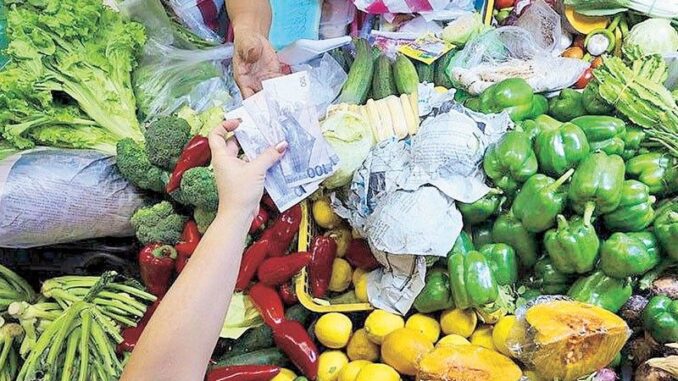
MANILA, Philippines — Inflation eased further in September to its lowest level in more than four years, driven by the slower increase in food prices, according to the Philippine Statistics Authority (PSA).
In a press briefing, National Statistician Dennis Mapa said headline inflation, or the rate of increase in average prices of goods and services typically purchased by consumers, slowed to 1.9 percent in September from 3.3 percent in August and 6.1 percent in September 2023.
Mapa said this is the lowest inflation print since the 1.6 percent in May 2020.
The September inflation is below the two to 2.8 percent forecast of the Bangko Sentral ng Pilipinas (BSP).
Mapa cited food and non-alcoholic beverages as the main driver of the inflation downtrend as the commodity group registered a slower increase of 1.4 percent in September from 3.9 percent in the previous month. This is the lowest since the 1.2 percent posted in February 2022.
Inflation for food alone eased to 1.4 percent in September from 4.2 percent in August.
The decline was primarily brought about by the slower inflation for rice at 5.7 percent in September from 14.7 percent in the previous month.
Mapa attributed the slower rice inflation to base effects.
“I’ve been mentioning since the previous press conferences that we will be experiencing the slowdown in August, September, it will go down because of high inflation in the previous years,” he said.
National Economic and Development Authority Secretary Arsenio Balisacan also cited the importance of Executive Order 62, issued by President Marcos last June, which reduced rice tariffs to 15 percent from 35 percent to keep rice prices affordable.
Apart from food, Mapa said another contributor to the downtrend in inflation was transport, which had a faster year-on-year decrease of 2.4 percent in September from the 0.2 percent drop in August.
The housing, water, electricity, gas and other fuels commodity group also had slower inflation of 3.2 percent in September from 3.8 percent in August.
From January to September, inflation averaged 3.4 percent, within the BSP’s two to four percent target.
Balisacan said the continued slowdown in inflation is expected to boost consumer confidence, drive higher spending and consumption and support business expansion.
According to Balisacan, easing food prices will relieve low-income households and enable them to allocate more to other essential needs such as education and health.
While lower tariffs are expected to bring down rice prices, he said the government should continuously support local production through increased agricultural funding.
“We will sustain the momentum as we assure the public that we will continue to pursue and carry out strategies to maintain stable prices of food and other commodities,” Balisacan said.
Moody’s Analytics economist Sarah Tan said inflation is expected to be at the lower half of the BSP’s target in the fourth quarter and bring the full-year average to 3.3 percent this year.
“The key driver will come from a deceleration in price growth of rice,” she said.
Tan said the downtrend in rice inflation would continue as retailers pass on the cost savings from a reduction in rice tariffs imposed since the end of June.
Likewise, the BSP expects inflation to continue its downward trend over the coming quarters, after inflation fell to an over four-year low in September.
“This latest inflation outturn remains consistent with the BSP’s assessment that inflation will continue to trend downwards over the succeeding quarters due to negative base effects and the easing of supply pressures for key food items,” the central bank said.
The BSP said the balance of risks for 2024 and 2025 remains skewed to the downside, though there is a slight upward risk anticipated for 2026.
“The BSP will consider the latest inflation outturn at the upcoming monetary policy meeting on Oct. 16. The Monetary Board will continue to take a calibrated approach in ensuring price stability conducive to balanced and sustainable growth of the economy and employment,” it added. — Keisha Ta-asan


Be the first to comment